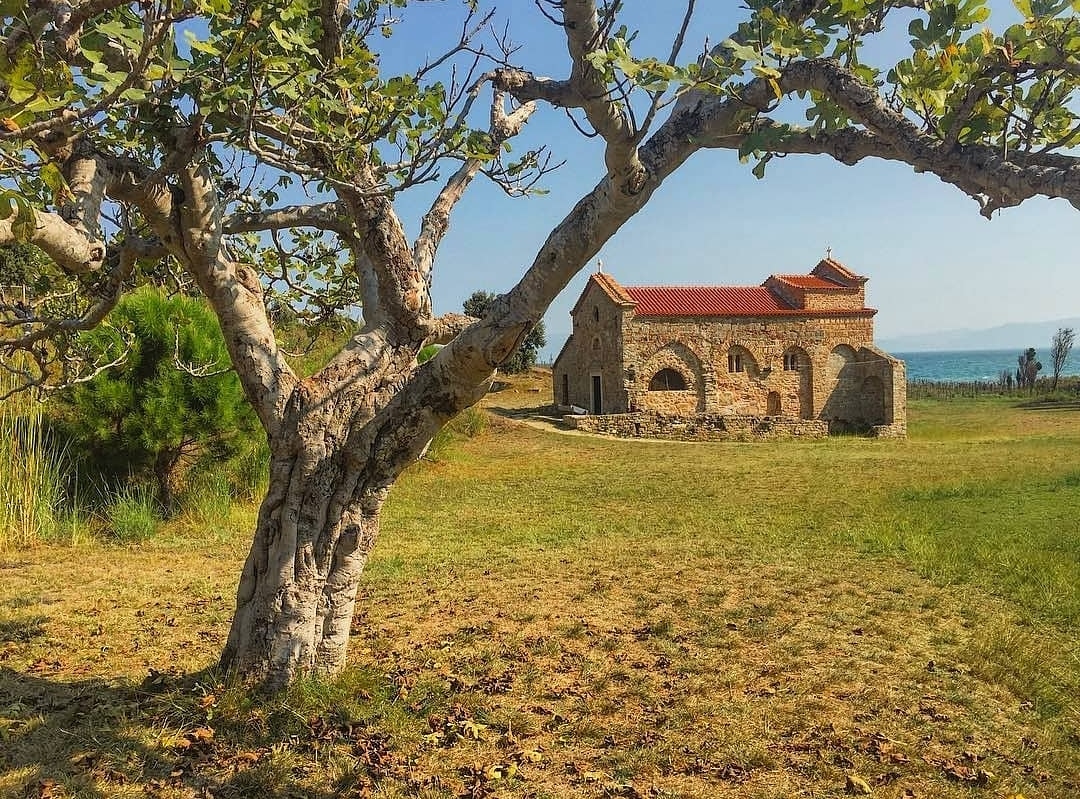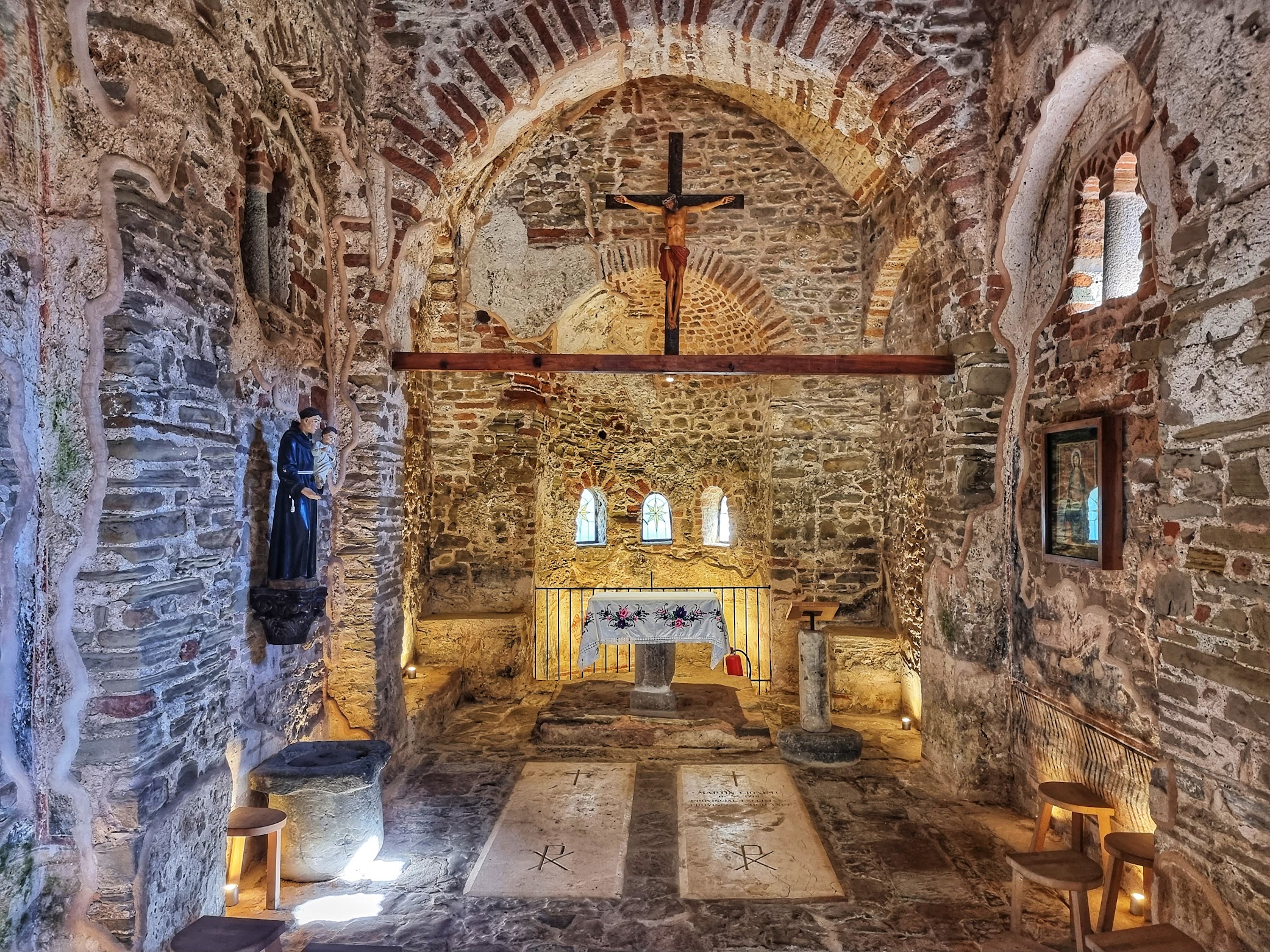Introduction to Cape of Rodon
The
Cape of Rodon, or
Kepi i Rodonit in Albanian, is a striking rocky cape positioned along the
Adriatic coast of Albania. Projecting proudly into the
Adriatic Sea, it’s located just north of the bustling city of Durrës. The cape marks the northernmost point of the Bay of Lalzi, serving as a significant geographical landmark in the region.
Geographically, the cape plays a crucial role in controlling access to the southern Adriatic thanks to its strategic positioning. Culturally, it is enriched by the presence of
Skanderbeg’s Castle and the
Church of St. Anthony—two historical sites that represent important facets of Albania’s past and religious heritage.
Not only does the Cape of Rodon boast historical importance, but it also offers a haven for tourists seeking natural beauty and a touch of history. Visitors here are treated to a relatively unspoiled Albanian experience, combining dramatic coastal scenery with opportunities for historical exploration. With its picturesque landscapes, majestic historical landmarks nearby, and a sense of serene isolation, the cape continues to draw those who long for an exploration that is both enriching and visually stunning.
Geographical Features of Cape of Rodon
The
geographical features of the Cape of Rodon are both dramatic and picturesque. The coastline, characterized by rugged cliffs, descends gracefully into rocky beaches, creating a breathtaking natural landscape. Hidden coves and inlets punctuate the shoreline, adding a touch of mystery and exploration potential to the area. While sandy beaches are sparse, the smaller pebbly beaches offer unique access to the sea and are perfect for breathers who truly want to connect with nature.
Flora in this region are typical of the
Mediterranean climate, with
maquis shrubland and
pine forests carpeting the landscape. The air is often filled with the scent of aromatic Mediterranean herbs like thyme and rosemary, contributing to the overall sensory experience. The plants here are predominantly drought-resistant, adapting well to the local conditions, thereby creating a vibrant and thriving ecosystem.
Positioned north of Durrës, the Cape of Rodon extends impressively into the
Adriatic Sea. It acts as a natural boundary between various coastal regions including the Bay of Lalzi to the south, and Lezhë positioned to its north. This placement not only enhances its geographical importance but also adds to its aesthetic appeal as a naturally balanced landscape.
In summary, the geographical richness of the Cape of Rodon lies not only in its stunning topography but also in its blend of diverse ecosystems and natural barriers. These features, combined with its historical background, form an alluring mosaic that continues to attract nature lovers and history enthusiasts alike.
Historical and Cultural Importance
The Cape of Rodon is not just a spot of natural beauty, but also a site steeped in
historical and cultural importance. The tales of the past are vividly recounted by iconic landmarks such as
Skanderbeg’s Castle and the
Church of St. Anthony.
Skanderbeg’s Castle, built in the 15th century by Albania’s revered national hero Skanderbeg, serves as a testament to the architectural and military ingenuity of that era. Although only ruins remain today, they offer visitors a glimpse into a robust historical narrative. The Church of St. Anthony is another significant landmark here. It showcases Byzantine architecture adorned with historical frescoes, offering a diverse blend of artistic and architectural styles. This church is not only a religious site but has cultural significance with its frescoes and unique edifice design.
Local legends and folklore further enrich the cape’s cultural landscape. These stories often highlight the strategic use of the cape by Skanderbeg, pointing to its role in Albania’s past defenses and fortifications. Skanderbeg’s strategic genius is evidenced by archaeological findings that revealed how the cape was effectively utilized for defensive fortifications.
Through these historical narratives and cultural emblems, the Cape of Rodon stands as a proud chapter in Albanian history. It offers a true glimpse into the historical dynamics that shaped the region, providing an immersive cultural and educational experience for its visitors.
Tourism and Activities at Cape of Rodon
The
tourism opportunities at the Cape of Rodon are as varied as they are exciting. Visitors are bound to find the perfect activity that suits their sense of adventure and thirst for cultural exploration.
Hiking ranks high amongst the popular activities at the cape. Trails here wind gracefully along the coastline, offering stunning views of the
Adriatic Sea. These routes not only spotlight the cape’s natural beauty but also provide access to key historical sites like Skanderbeg’s Castle and the Church of St. Anthony. These hikes elicit a sense of adventure while connecting the modern world to the stories of the past.
For those fond of more serene recreational activities, the small beaches and hidden coves offer perfect spots for
sightseeing and swimming. The azure waters of the Adriatic provide a fantastic backdrop, and the serene environment ensures an immersive experience in nature.
When planning a visit, timing is crucial for ensuring an optimal experience. The best times to visit are during the spring (
April–
June) and autumn (
September–
October) months, when the weather is most pleasant. Access to the cape is facilitated both by road and by sea. While roads may require the use of
off-road vehicles due to uneven terrains, the views make the drive worthwhile. Alternatively, boat trips from nearby coastal towns like Durrës provide enchanting seascapes en route.
Despite its appeal, facilities at the cape are limited due to its underdeveloped state. Tourists are advised to make necessary preparations due to the sparse services available in the area. Nonetheless, the raw, untouched nature of the environment greatly contributes to its charm, captivating all who make the journey.
In all, the Cape of Rodon provides a medley of activities that are ideal for those seeking both adventure and relaxation. It is where history, culture, and nature collide to create a remarkable experience.
Best Times, Facilities, and Accessibility at Cape of Rodon
Planning a visit to the Cape of Rodon requires an understanding of the best times to go, as well as the facilities and accessibility of this relatively undeveloped destination. This knowledge is crucial to prepare adequately and make the most of your visit.
Spring and autumn, specifically from
April to
June and
September to
October, are the best times to explore the area. During these months, the weather is pleasantly mild, allowing visitors to comfortably partake in outdoor activities. The summer months might be tourist-friendly as well, but they can also get quite hot, which may hinder some experiences like long hikes.
The facilities at the Cape of Rodon are limited due to its lack of development. Unlike more commercial tourist spots, the cape does not boast a range of services. This means visitors need to be self-sufficient, bringing necessary supplies such as food, water, and, if needed, camping gear.
When it comes to
accessibility, reaching the cape presents unique challenges and opportunities. The roads leading to Cape of Rodon can be rough and unpaved, often requiring
off-road vehicles. This can be an adventure in itself but is important to be aware of for planning purposes. Another exciting option is to take a boat, with services often available from coastal towns such as Durrës. Not only does this provide a smooth journey, but the approach by sea also offers delightful views of the cape.
By understanding the timing, facilities, and access, visitors can better appreciate the rugged beauty and historical wealth the cape offers. Though it remains a challenge for some, those who navigate its untamed paths and limited infrastructures are rewarded with a serene environment and enchanting sites, far removed from the bustle of commercial tourism.
Environmental and Conservation Aspects of Cape of Rodon
The Cape of Rodon is not only a site of historical and cultural richness but also a location of significant environmental importance. Future visitors and conservationists alike must consider the environmental aspects and ongoing conservation efforts.
While the specific
protected status of the area may vary, there is a growing emphasis on preserving its natural landscape and biodiversity. The actions toward its conservation highlight the crucial need to protect its diverse flora and fauna as well as historical sites from the impacts of modern tourism and development. These efforts aim to ensure that future generations can continue to enjoy the cape’s unique ecosystem and cultural beauties.
Preserving the habitat is vital because it supports a distinct
Mediterranean climate ecosystem with various plant species, including resilient drought-tolerant types like thyme and rosemary. The efforts in conservation extend to maintaining the integrity of historical sites, such as Skanderbeg’s Castle and the Church of St. Anthony, so they remain intact and significant for educational and cultural purposes.
Effective conservation methods being employed emphasize sustainable tourism practices and respect for the ecological and cultural landscapes. By planning diligently and taking active steps to maintain the environment, the Cape of Rodon stands to serve as a model for balanced interaction between humans and nature.
Ultimately, conservation not only protects the environment but enhances the visitor experience by ensuring that the cape remains undisturbed and pristine. Hence, a commitment to preserving this corner of Albania’s coastline is vital for maintaining its charm and significance.
Conclusion
The allure of the
Cape of Rodon lies in its harmonious blend of striking
natural beauty, historical depth, and cultural heritage. It stands as a testament to Albania’s rich history, offering a treasure trove of scenic landscapes and engaging historical narratives that captivate the hearts and minds of those who visit.
The Cape is more than just a geographical feature; it is a canvas painted with the stories of the past, fringed with the vibrant strokes of its natural environment. Tourists and history enthusiasts alike find themselves drawn to its shores, where the sea whispers tales of Albanian heroes and the land offers a quiet, untouched experience away from bustling tourist hubs.
In visiting this captivating destination, readers are encouraged to maintain a spirit of
responsible exploration. By respecting the natural environment and cultural heritage, travelers not only ensure their personal enjoyment but contribute to the preservation and appreciation of this remarkable site. The Cape of Rodon stands ready to offer its secrets to those seeking a journey rich in history, culture, and unspoilt nature.





